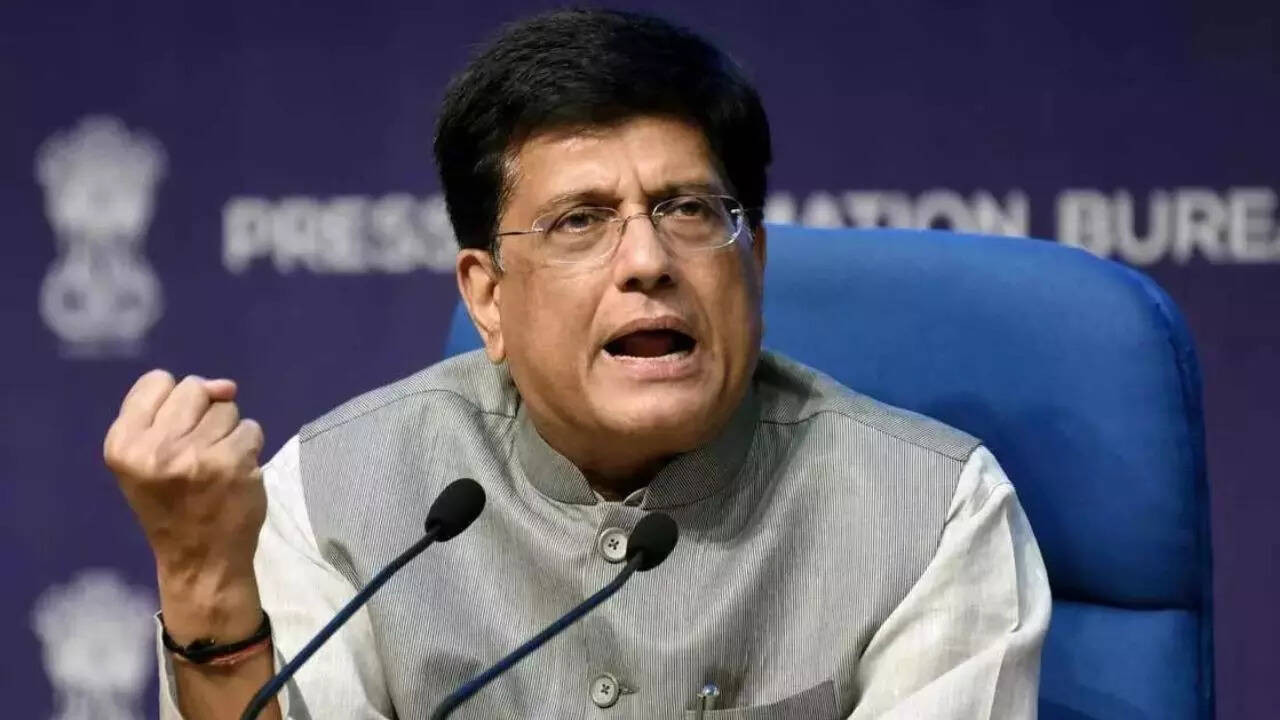Piyush Goyal announced India’s ambition to become a top three global economy within the next two to two-and-a-half years, highlighting the nation’s remarkable economic progress. He attributed this growth to reforms like GST, projecting a $30 trillion economy by 2047.
India’s Bold Leap: A $30 Trillion Economy by 2047?
India’s economic trajectory has been nothing short of a captivating story, a narrative of resilience, ambition, and a relentless drive for growth. Recently, Commerce and Industry Minister Piyush Goyal painted a particularly vibrant picture of India’s future, projecting a staggering $30 trillion economy by 2047. This isn’t just aspirational chatter; it’s a bold vision built on the foundation of recent economic triumphs and a strategic approach to global challenges.
But what exactly fuels this optimism? And how realistic is this ambitious target in a world grappling with uncertainty? Let’s delve into the key factors underpinning this projection and explore the potential hurdles that lie ahead.
India’s Economic Resilience: A Foundation for Growth
Goyal’s confidence stems from India’s proven ability to weather global storms. He emphasized that India “neither fears nor bows down” to challenges, a testament to the nation’s inherent resilience. This isn’t mere rhetoric. Consider how India navigated the COVID-19 pandemic, emerging with a stronger, more digitized economy. The government’s focus on structural reforms, infrastructure development, and promoting domestic manufacturing has created a robust economic base.

Furthermore, India’s demographic dividend – a large and youthful workforce – presents a significant advantage. This demographic edge, coupled with increasing digital literacy and a thriving startup ecosystem, provides a fertile ground for innovation and economic expansion. The government’s “Make in India” initiative, aimed at transforming the country into a global manufacturing hub, is also gaining traction, attracting foreign investment and creating employment opportunities.
Navigating Global Headwinds
Of course, the path to a $30 trillion economy isn’t without its obstacles. Global economic volatility, geopolitical tensions, and climate change pose significant risks. However, India’s proactive approach to these challenges is noteworthy. The government is actively diversifying its trade relationships, reducing its dependence on any single market. Simultaneously, investments in renewable energy and sustainable development are mitigating the impact of climate change and fostering a greener economy. You might find this related article on [sustainable development initiatives in India](internal-link-to-related-article) interesting.
Moreover, India is actively participating in shaping the global economic order, advocating for reforms in international institutions and promoting a more inclusive and equitable global trading system. This proactive engagement ensures that India’s voice is heard and its interests are protected on the global stage.
The Road to a $30 Trillion Economy: Key Drivers
Several key drivers will be instrumental in achieving this ambitious goal. Increased infrastructure spending, particularly in areas like transportation and renewable energy, will be crucial. A streamlined regulatory environment and reduced bureaucratic hurdles will further boost investment and entrepreneurship.
Another critical factor is the development of a skilled workforce. Investing in education and vocational training is essential to equip the youth with the skills needed for the jobs of the future. The government’s “Skill India” mission is a step in the right direction, but continuous efforts are needed to bridge the skills gap and ensure that the workforce remains competitive in the global market.
The digital economy will also play a pivotal role. India’s rapidly growing digital infrastructure, coupled with increasing internet penetration, presents immense opportunities for businesses to innovate and expand. The government’s focus on promoting digital payments, e-commerce, and digital literacy is further accelerating the growth of the digital economy.
Is the $30 Trillion Dream Attainable?
While predicting the future is always a risky endeavor, the foundations for significant economic growth are undoubtedly in place. India’s resilience, strategic policies, and demographic advantages provide a strong platform for achieving this ambitious target. Sustained policy reforms, infrastructure investments, and a focus on skill development will be crucial to unlocking the country’s full economic potential.
The journey towards a $30 trillion economy won’t be a smooth ride, but India has consistently demonstrated its ability to overcome challenges and emerge stronger. With continued determination and strategic planning, this ambitious vision could very well become a reality, solidifying India’s position as a global economic powerhouse.







